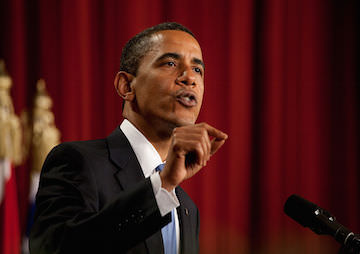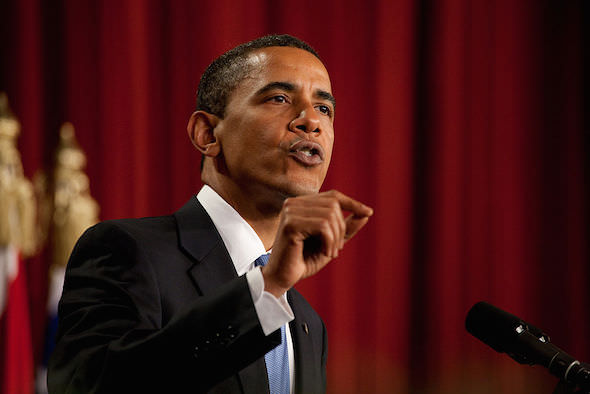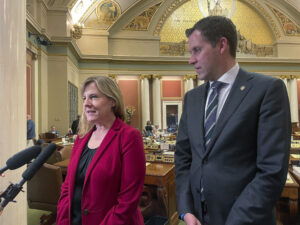If You Think Obama’s New Climate Change Plan Is Bold, Think Again
Describing it as “the single most important step America has ever taken in the fight against climate change,” President Obama on Monday unveiled a series of measures curbing carbon emissions from power plants. Although the president’s statement may be true, as meteorologist Eric Holthaus writes, “It’s not saying a whole heck of a lot.”

Describing it as “the single most important step America has ever taken in the fight against climate change,” President Obama on Monday unveiled a series of measures curbing carbon emissions from power plants. The Clean Power Plan is designed to expedite the retirement of the nation’s coal-fired power plants and has been described as equivalent to taking 70 percent of American cars off the road.
As meteorologist Eric Holthaus writes for Slate, although the president’s statement may be true, “It’s not saying a whole heck of a lot.”
He continues:
As I wrote last year when the rule was initially announced, many states are already well on their way to achieving the required reductions, thanks in part to a recent boom in cheap natural gas and the Obama administration’s choice of 2005 as the basis year for cuts, which was close to America’s all-time peak in carbon emissions. Obama’s plan is significant, but it’s not bold.
A previous version of the targets, announced last year, would have required states to begin implementing changes to their power-producing mix in 2020. The final rule, to be announced Monday, gives states and utilities an extra two years, until 2022. The targets will vary by state, depending on their current energy mix, and states will have flexible ways of achieving emissions reductions, including an option to join an interstate cap-and-trade scheme.
All this will be a heavy lift for some coal-intensive states, like Wyoming, but it’s being heralded as largely “business as usual” for some states, like Minnesota, that have already made significant efforts to shift their energy mix.
According to the New York Times and the independent Climate Action Tracker website—which helps keep world leaders honest in the run-up to this year’s possibly pivotal international climate negotiations in Paris—the new rule puts America on a middling emissions-reduction pathway, at best.
Vox’s Brad Plumer has calculated that the president’s rule would shave just 6 percent from U.S. carbon emissions by 2030. Climate science and international equity demand the U.S. cut emissions 80 percent by then. We’re nowhere near that pace.
Don’t get me wrong; the Clean Power Plan, if fully enacted as it is, would definitely help reduce our carbon emissions. But to imply that Monday’s nudge toward cleaner electricity will bring about a bold new era in American climate leadership is disingenuous. Growing economic headwinds in the fossil fuel sector—particularly in the coal and oil industries—may bring about radical change much sooner than Obama’s Clean Power Plan. If Obama really wants to make a lasting impact on global warming, he can work across the aisle or across the Pacific in Beijing, to work toward implementing a meaningful, economy-wide carbon tax as quickly as possible. Just because such a breakthrough feels impossible doesn’t mean it isn’t necessary.
Read the article in full here.
–Posted by Roisin Davis
Independent journalism is under threat and overshadowed by heavily funded mainstream media.
You can help level the playing field. Become a member.
Your tax-deductible contribution keeps us digging beneath the headlines to give you thought-provoking, investigative reporting and analysis that unearths what's really happening- without compromise.
Give today to support our courageous, independent journalists.






You need to be a supporter to comment.
There are currently no responses to this article.
Be the first to respond.